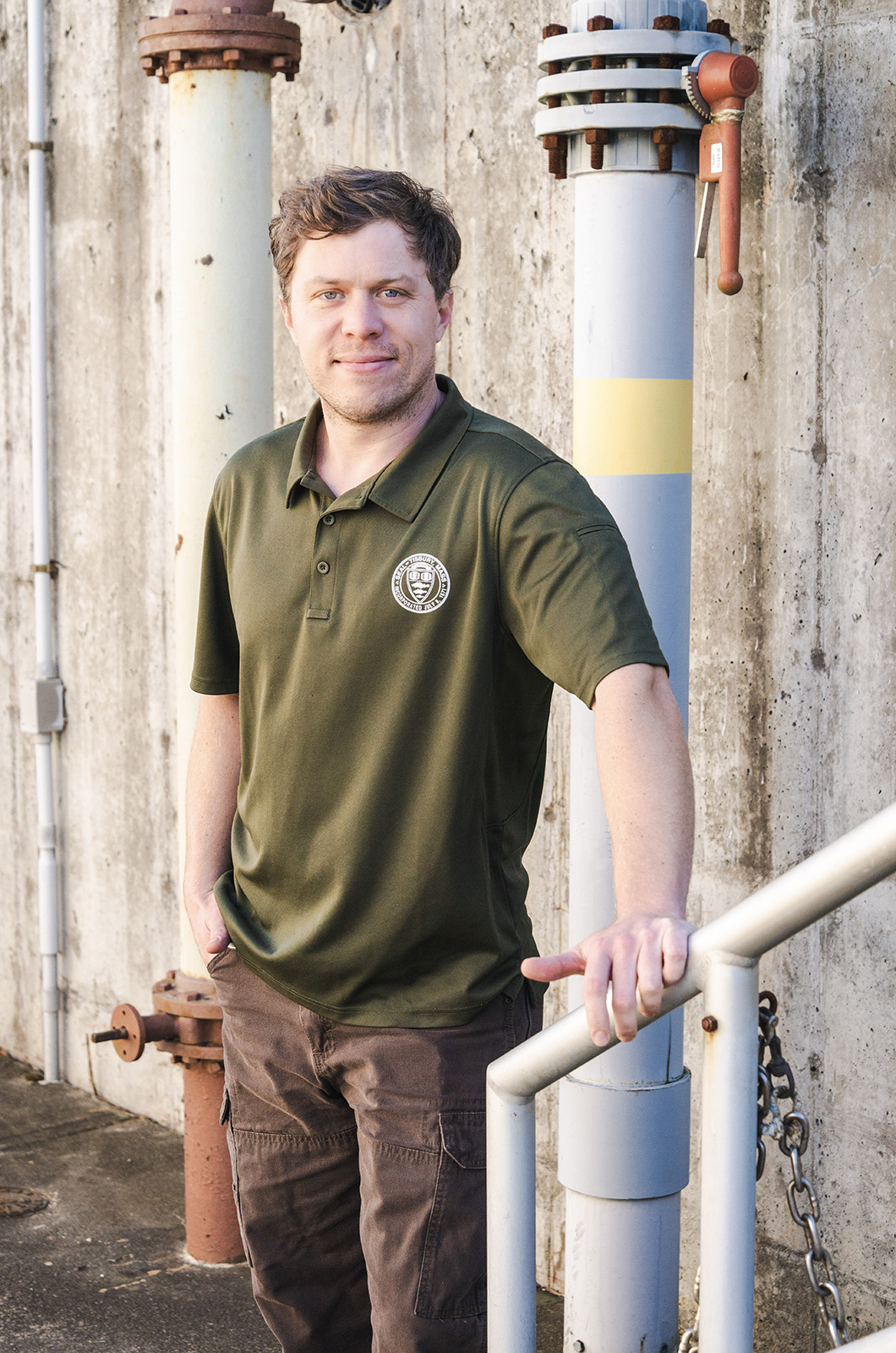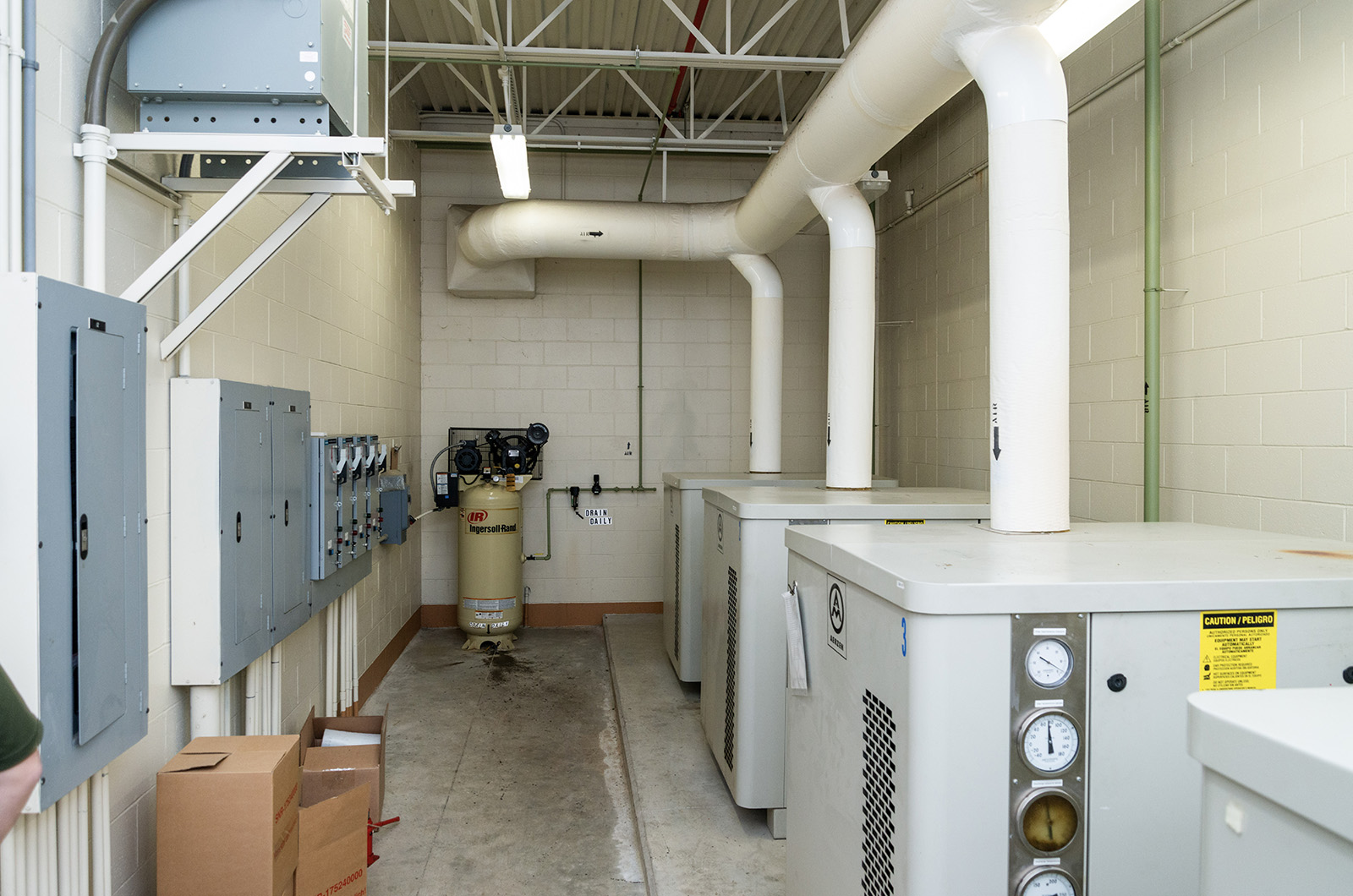When the new year arrived so did a set of costly septic regulations in Tisbury, with 1,500 home systems immediately subject to new rules from the town board of health.
As of Jan. 1, every time a house is sold in the Tashmoo or Lagoon Pond watersheds the septic system must be replaced with an enhanced, nitrogen-removing septic system. Systems that need to be repaired or replaced also fall under the new stipulations.
Replacing an existing system with an enhanced one can cost upwards of $50,000, not including the necessary upkeep and monitoring.
The new regulations in Tisbury are at the vanguard of a new wave of local planning meant to address degrading water quality in Island estuaries, an issue primarily caused by nitrogen pollution from on-site septic systems. Oak Bluffs is in the process of implementing a town wastewater plan, which includes an enhanced septic system program along with sewer expansion, while the Martha’s Vineyard Commission is developing a plan for the up-Island towns, which lack centralized sewers. Edgartown is also undergoing a wastewater planning process.
Tisbury, though, through the board of health, has been the first to implement new regulations meant to curb nitrogen pollution.
But as Island towns and regional authorities begin to act on the issue, local planners and professionals are grappling with the reality of implementing such regulations — and whether the Island is moving in the right direction.
“It all takes money and time and effort,” said Reid Silva, owner of civil engineering firm Vineyard Land Surveying, who has worked with septic for 20 years. “It’s very easy to create a regulation that requires something, but how you actually implement it and manage it is the piece that they haven’t figured out.”
The issue came to a head in 2023, when the state department of environmental protection proposed the first revision to their septic regulations in nearly 30 years. Towns under those regulations would either have to develop a plan to reduce nitrogen in their watersheds or be required to upgrade thousands of septic systems. Martha’s Vineyard, along with the South Coast and Cape Cod, was initially slated to be a part of those regulations, but the Island was exempted by the state after an extensive public comment period.
Still, the issue has remained a prominent one on-Island. Wastewater planning in all six Island towns is being undertaken with the same guidelines that would have been required under the new state septic regulations, part of the reason the state pulled the Vineyard out of its new plan.
For local planners, one central question has been how to balance two potential solutions to the wastewater issue: the expansion of central sewers or the promotion of private, enhanced septic systems.
Historically, Island planners have been skeptical of increasing sewer capacity, which can remove up to 97 per cent of nitrogen from wastewater, out of fears that increased capacity might encourage development. But traditional septic systems only remove about 20 per cent of nitrogen, so when development accelerated anyway, water quality deteriorated.
The trade-off is far from new.
“One of the most important issues facing the Island is that of an adequate sewer system,” wrote the Gazette in a 1967 editorial. “The problem can’t be dodged or ignored . . . . Otherwise a crisis may easily arise that will require quick action without sufficient preparation.”
In the early 2000s, the first enhanced systems began to appear on the scene, able to remove approximately 50 per cent of the nitrogen. More recently, momentum has shifted to the locally-developed KleanTu enhanced systems, which claims to remove 92 per cent of nitrogen, though the company has yet to receive final certification by MassDEP.
In Tisbury’s new nitrogen regulations, enhanced systems must remove at least 75 per cent of nitrogen waste in order to qualify.
“All I can say is, they’re the hot new ride,” said Doug Cooper, an Island environmental engineer involved in Edgartown wastewater planning, of the new, enhanced technology. Despite a career often focused on minimizing municipal sewer systems, Mr. Cooper said he is still skeptical about the ability of enhanced septic systems to do the job alone.
“Sewers are probably the more efficient way of removing nitrogen from a particular drainage basin,” he said.
Though enhanced systems have been pitched as a way to clean water without expanding sewers, the implementation of new regulations in Tisbury has highlighted a critical trade-off: it puts the responsibility of payment solely on the individual.
In a letter to the Tisbury board of health in November, the Cape Cod and Islands Association of Realtors asked the board to reconsider the requirement to upgrade systems upon a property’s sale, claiming it would exacerbate the Island’s housing crisis.
“We all know the Vineyard housing market and Tisbury’s in particular has seen prices rising quickly over the last few years, but one of the pockets where there has been more affordability is in these watersheds being targeted,” they wrote. “This action quite simply makes the more attainable properties in Tisbury more unaffordable.”
A bill passed by Gov. Maura Healey’s administration last year tripled the tax credit for upgrading septic systems to $18,000, however that credit only applies to failed systems, leaving property sales out of the program. Available septic grants from Dukes County, the realtor’s association wrote, are unlikely to cover the full costs of implementation.
This tension between sewering and septic in historically-affordable neighborhoods also applies to Edgartown, said environmental engineer Chris Alley. In the Arbutus Park and Ocean Heights neighborhoods near Sengekontacket, for instance, enhanced systems have been required on most properties since 2007.
“There’s kind of a philosophical side of this,” he said. “Is cleaning Sengekontacket the responsibility, morally and financially, of the residents of Ocean Heights and Arbutus Park, or is it the responsibility of the town? If it’s the responsibility of the town, then you would lean toward everyone pitching in and putting in a sewer.”
According to Edgartown wastewater supervisor Bill Burke, the department is planning to incorporate that area into the municipal sewer, aiming to put a $3.1 million article on the town warrant this year to push forward those efforts. But actual installation of that sewer infrastructure remains years in the future.
In the meantime, said Mr. Alley, some homeowners in the area might find themselves caught in the middle.
“You put one of these really expensive septic systems in and then in three years the town decides to sewer your roads, it tells you to tie into the sewer. You probably haven’t even paid off the loan you needed to put into the septic system,” he said.
In Tisbury, interim town wastewater supervisor Mike Alberice said part of the solution could be the establishment of the town as a Responsible Management Entity (RME), a possibility first proposed by his predecessor Jared Meader.
Under such a strategy, the town wastewater department could take over the installation and management of new, enhanced septic systems, distributing costs through payments akin to a sewer betterment.
The RME would also allow the department to take a more active approach in managing the systems, which are now monitored by private contractors hired by the homeowner.
“It’s like you have 500 little wastewater plants. And if you have, you know, 20 different people who are maintaining them, you sort of get this patchwork,” he said. “It could go well, but I could see a lot of things falling through the cracks.”
Going forward, Mr. Alberice said, cooperation between the wastewater and health departments will be important for implementing these solutions.
But whether privately or publicly managed, the proliferation of enhanced septic systems could create a major burden for monitoring
and maintenance for an already-limited workforce.
“It’s creating an industry that really hasn’t gotten there,” Mr. Silva said. “There’s a reality behind environmental protection, but there’s also reality behind the economics and the physical capacity to implement and manage these things.”








Comments (12)
Comments
Comment policy »